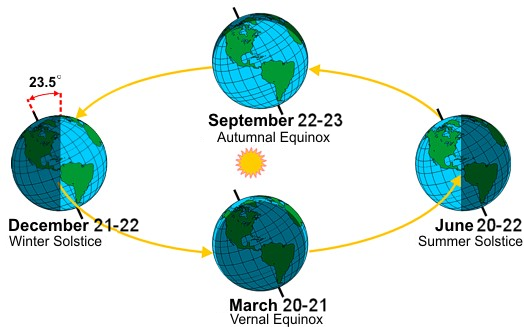Important Facts For Prelims
Vernal Equinox
- 22 Mar 2023
- 2 min read
Why in News?
The vernal equinox is observed on March 21st 2023.
What is Equinox?
- About:
- Equinox happens twice a year when the sun is directly above the equator, and it occurs on approximately 21st March and 23rd September.
- During an equinox, both the Northern and Southern Hemispheres have equal day and night time. The vernal equinox (spring equinox) takes place in the Northern Hemisphere around 20th or 21st March, while in the Southern Hemisphere, it happens on 22nd or 23rd September.
- Conversely, during the autumn season in the Northern Hemisphere on 23rd September (autumn equinox), it is springtime in the Southern Hemisphere, and on 21st March, it is the opposite.
- Significance:
- As a result, the Sun is located directly above the equator, and both hemispheres receive an almost equal amount of sunlight.
- After the spring equinox, the northern hemisphere tilts closer to the sun in March, resulting in more hours of daylight, with earlier sunrises and later sunsets.
- According to Hindu astrology, Vernal Equinox is known as Vasant Vishuva or Vasant Sampat.
- The Spring equinox brings earlier sunrises, later sunsets, and sprouting plants in the northern hemisphere.
- Later sunrises, earlier sunsets, chillier winds, and dry and falling leaves are observed in the south of the equator (southern hemisphere).
UPSC Civil Services Examination Previous Year Question (PYQ)
Q. In the northern hemisphere, the longest day of the year normally occurs in the:
(a) First half of the month of June
(b) Second half of the month of June
(c) First half of the month of July
(d) Second half of the month of July
Ans: (b)
Explanation:
- In the northern hemisphere ‘Second half of the month june (21st june)’ is the longest day of the year.
- Hence option (b) is correct.





